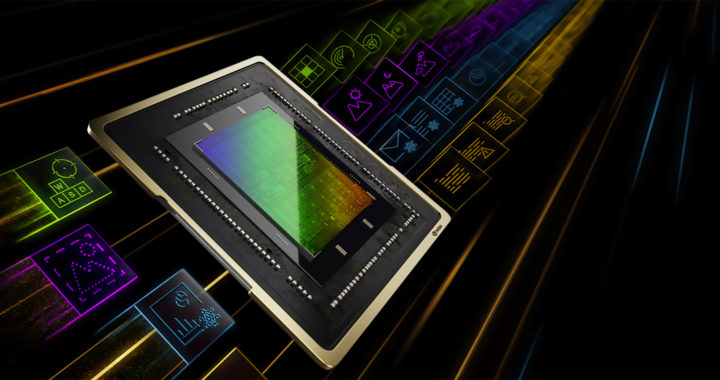There are three main sets of cores or processing units found inside higher-tier NVIDIA GeForce RTX graphics processors. These are the CUDA cores, Tensor cores, and RT cores. The Tensor cores are co-processing units that demonstrate the integration of artificial intelligence technologies in modern graphics processing technology. What exactly are these Tensor cores? What do they do and how do they work? Why are the processing units important?
Explaining the Purpose and Applications of Nvidia Tensor Cores: What Are They, How Do They Work, and Why Are They Important?
Nvidia first introduced the Tensor cores for its data center graphics processors in 2017 with the Volta architecture and further for the end-use consumers in 2018 with the introduction of the Turing architecture and the launching of the GeForce RTX 2000 series of graphics processors. The collective components have now become one of the main sets of cores in modern RTX graphics processors alongside the CUDA cores and RT cores.
Purpose
Tensor cores are co-processing units that are designed to perform matrix multiplication and accumulation operations at higher speeds and better precision. These are essential in machine learning training or running AI algorithms and models. This makes these processing units AI accelerators built within a graphics processing architecture.
It is important to note that CUDA cores or main GPU cores can be used for AI acceleration but they are inefficient. The number of these cores is limited. These cores can also only operate on a single computation per clock cycle. Nvidia developed the Tensor cores and integrated them into modern GPU design to overcome these limitations.
Remember that Tensor cores can handle matrix multiplication faster and are specifically designed for numerical processes. This comes from the fact that can specifically handle multiple operations, unlike the single-operation limitation of CUDA cores. The drawback to this is that these cores are not as accurate as main GPU cores or CUDA cores.
Hence, based on the aforementioned, the purpose of Tensor cores is to accelerate artificial intelligence workloads. The inclusion of dedicated AI accelerators in graphics processing comes from the fact that GPUs have been used for training AI models and various modern graphics processing tasks are also dependent on AI algorithms.
These cores also equipped graphics processors with parallel processing capabilities. Parallel processing or parallel computing is a method in computing that involves running two or more processors or sets of cores to handle separate workloads that are part of an overall task. This is akin to dividing a large and complex task into smaller ones.
Applications
Understanding further the importance of Tensor cores or AI accelerators in modern GPU requires understanding the examples of tasks and workloads that these co-processing units can accomplish. The following are examples of tasks that represent the different applications of Tensor cores in an Nvidia graphics processor:
1. Image and Video Processing: These cores perform different image processing tasks such as denoising, upscaling, super-resolution, and color correction, and video processing tasks such as encoding, decoding, frame interpolation, and object tracking.
2. Real-Time Rendering: Another application of Tensor cores in Nvidia GPUs is in accelerating graphics rendering in real-time. This is critical in video games, graphical simulations, image and video generation, and computer-aided designs.
3. Deep Learning Super Sampling: Tensor cores power a set of Nvidia technologies called Deep Learning Super Sampling or DLSS. These include image enhancement and upscaling features that use deep learning algorithms.
4. Scientific Research: Another notable application is in scientific research that involves solving complex scientific problems. Specific examples include running analytical software for big data analytics and simulation software programs.
5. AI Training and AI Inference: They also provide an order-of-magnitude higher performance with precisions like 8-bit floating point FP8 in the Transformer Engine, Tensor Float 32 TF32, and FP16 for training and inferencing AI models.
6. Running AI Applications: A set of tensor cores also helps the GPU to process workloads related to specific AI applications. These include natural language processing for speech recognition, machine translation, and text summarization.

